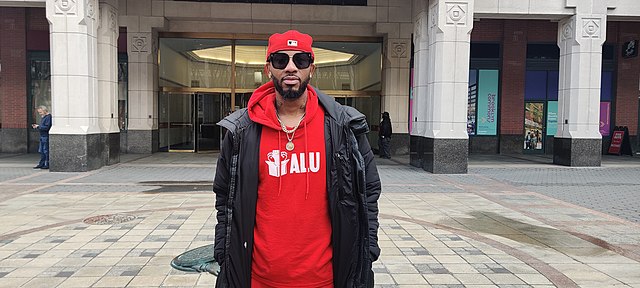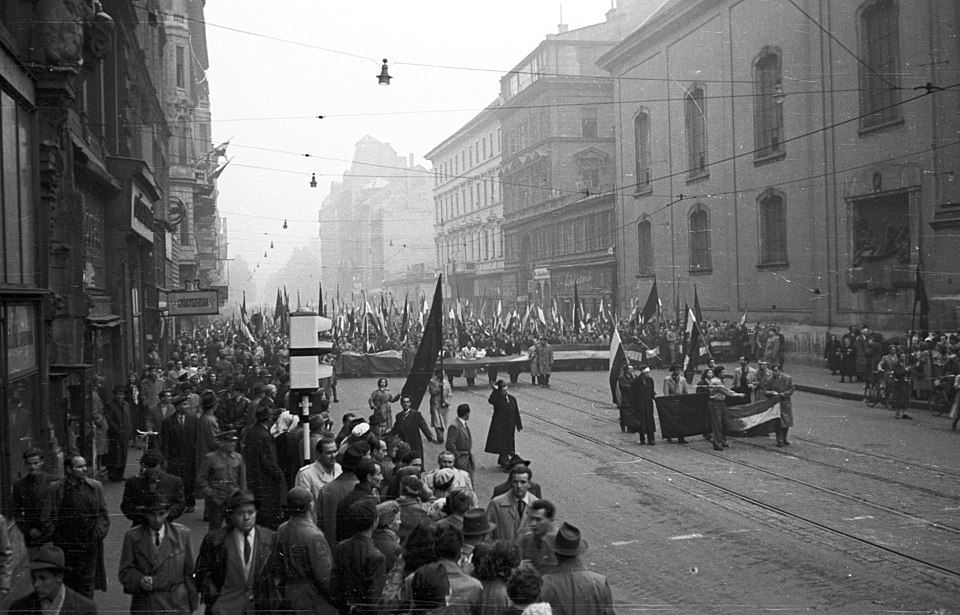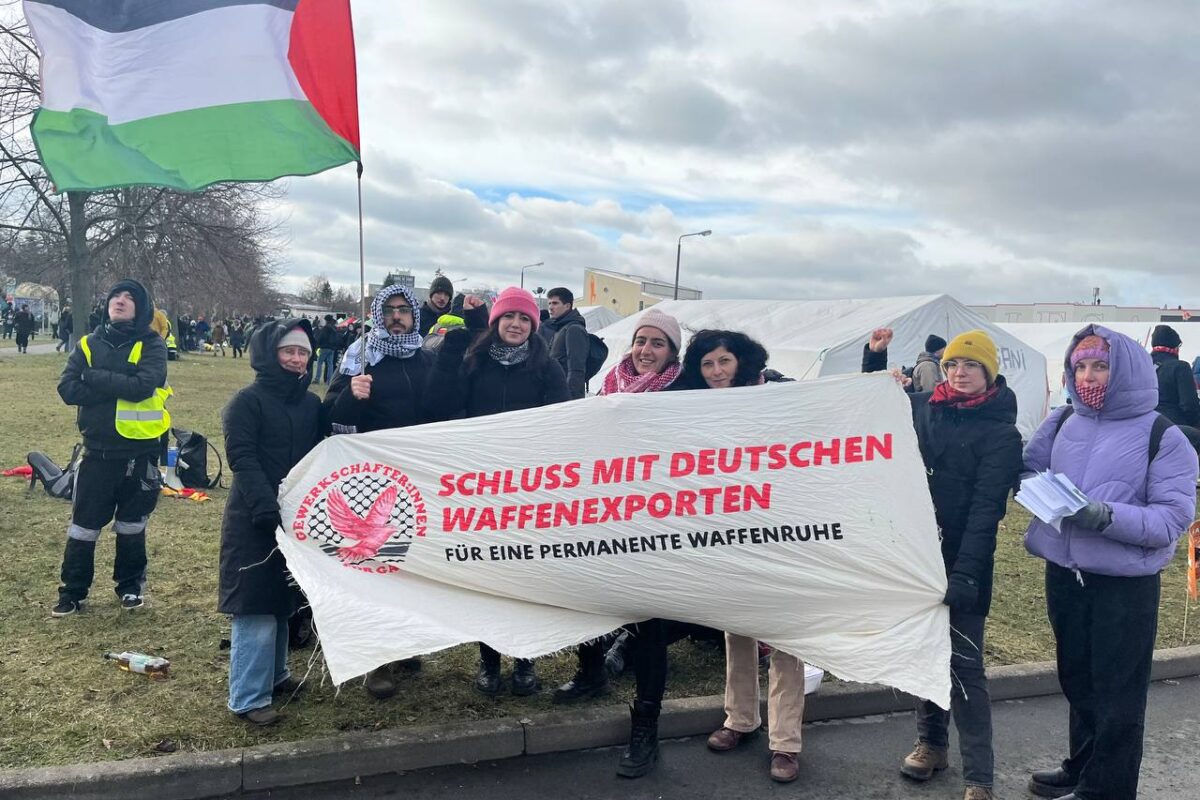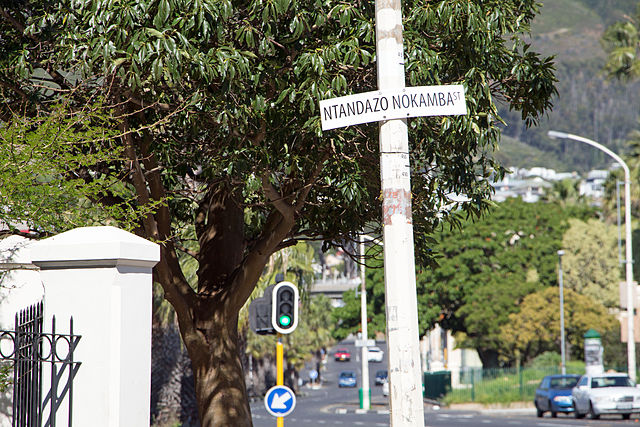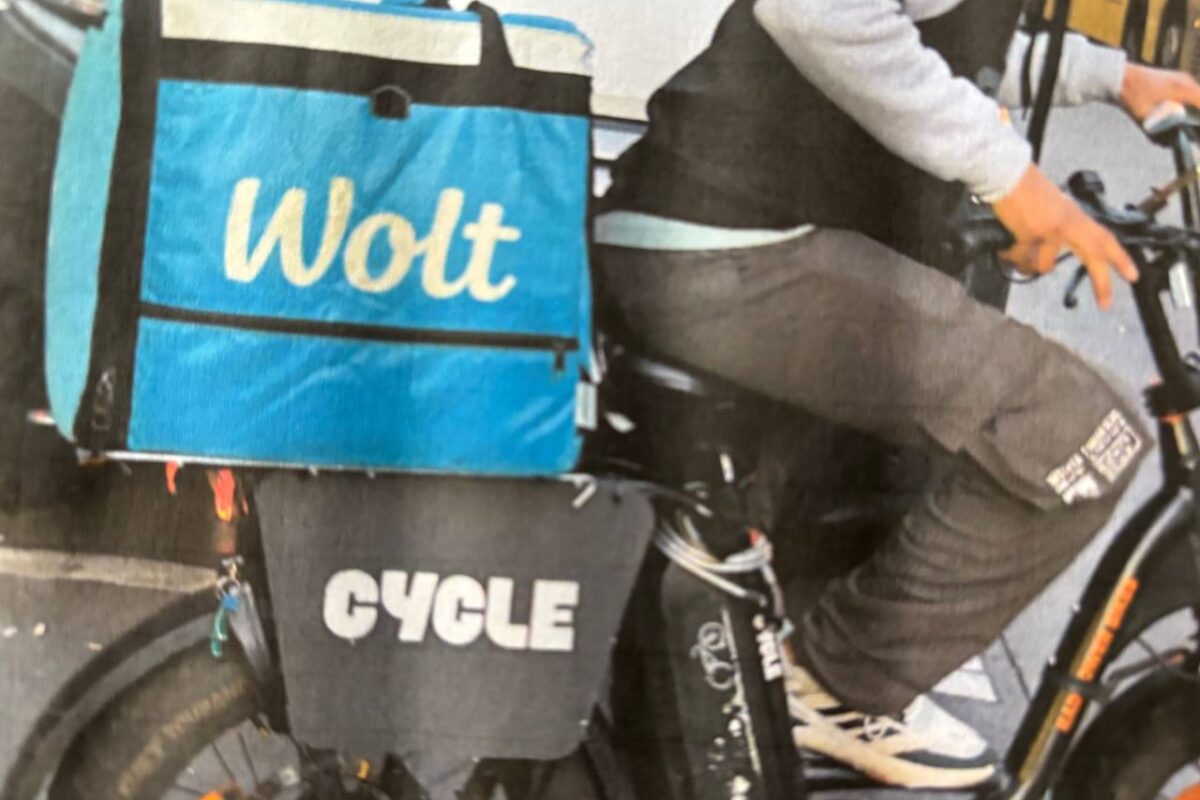This month, Amazon workers on Staten Island made history when they voted to form the first ever union at the notoriously anti-worker logistics behemoth. Right now, workers at a second Amazon facility on the same campus are voting on whether to unionize. The Amazon Labor Union (ALU), the scrappy, independent union who organized the JFK8 warehouse, and its charismatic leader, Chris Smalls, are about to face their first real test after their monumental upset victory.
It’s hard to overstate the magnitude of ALU’s struggle. For one, the emergence of unions at Amazon, the US’s second-largest private employer, has profound implications for the balance of power between the labor movement and capital. Reporters on the labor beat have called it the biggest victory for US labor since the 1997 Teamsters strike, since the Reagan era, or even since labor’s high water mark in the 1930s. Furthermore, ALU is shaking up time-tested organizing maxims that, until a few weeks ago, seemed like common sense. As this high-stakes struggle unfolds, here are five things to watch for.
1) Is the JFK8 victory a one-off, or will it inspire a union wave like we’re seeing at Starbucks?
On April 1, workers at the JFK8 warehouse clinched their victory 2,654 to 2,131, with 8,325 eligible voters. From April 25 to 29, about 1,500 workers at the nearby sorting center LDJ5 will vote on whether they want to join ALU. The scale of LDJ5 is smaller, and workers’ demands aren’t identical; whereas warehouse workers are facing grueling twelve-hour shifts, the mostly part-time workers in the sorting center just want enough hours to pay the bills. But despite these differences, the second vote following close on the heels of the first has the opportunity to create a narrative of a union snowballing at Amazon – if the workers vote yes. Chris Brooks of the NewsGuild of New York calls this phenomenon “momentum organizing”: “Workers are in terrible conditions all over the country and when they see a public example of a group of people in a similar situation taking action to better their situation, it encourages them to do the same.”
There are reasons to be optimistic that Amazon workers will secure a second victory. New York has high union density, at 20%, compared to just 6% in Bessemer, Alabama, where Amazon has successfully suppressed a union vote twice. This means more workers know first-hand the benefits of being in a union, from their family members or friends. In addition, the US is witnessing a union wave at Starbucks, showing that, in 2022, conditions have made it possible for unions to spread. Labor scholar Ruth Milkman points out a few of the conditions that might encourage Amazon workers to unionize: first, the recent rise of the college-educated left in the US has enabled union victories among journalists, academics, and even at Starbucks (although, she says, the Staten Island victory eclipses any of these smaller wins). Second, a tight labor market means that workers can feel more comfortable taking the risk of unionizing; if they’re fired, they’re well-positioned to get another job. Finally, Amazon’s own brutally repressive tactics, like electronic surveillance and automatic firings, might be the best motivator for workers to vote for a union.
However, we shouldn’t underestimate Amazon’s union-busting for a minute. The company spent $4.3 million on anti-union efforts in 2021. They subjected Staten Island workers to tried-and-true boss tactics like captive audience meetings and anti-union consultants prowling the shop floor and telling lies to workers. Labor Notes’ Luiz Feliz Leon has detailed how Amazon is playing dirty at LDJ5, even blaming one worker leader for the suicide of another worker.
So, will the LDJ5 vote be the second in a coming wave of Amazon unionizations? Workers and leftists (and Amazon) will be watching closely to find out.
2) ALU’s organizing approach was deeply unorthodox. Does that mean we throw out what we know about organizing?
If you’ve followed this story, you’ve probably heard about ALU’s unusual tactics. They eschewed traditional house visits, instead favoring conversations in breakrooms and at public bus stops. They made savvy use of TikTok and Telegram. They reached out explicitly to workers of color and immigrants. They even handed out marijuana once. ALU made strategic decisions that defied standard labor organizing practices, like going public before their organizing committee was established, and filling for an election with the NLRB with the bare minimum of cards signed – 30% – when veteran organizers usually wait until they have 70% or 80%.
And you’ve no doubt heard about ALU leader Chris Smalls, whose story is now famous: Amazon fired him after he led a walkout to protest the absence of pandemic protections. The company then aimed to discredit the union effort by painting Smalls as “not smart or articulate” – a smear Smalls turned around to make himself a martyr for the workers’ struggle. Many of the other worker leaders in the struggle were also new to labor organizing, although some salts (experienced organizers who infiltrate a workplace with the goal of forming a union) were present.
But perhaps the most noteworthy feature of the ALU fight was the nature of ALU itself. They remained intentionally independent from the traditional unions that might organize the logistics sector, like the Teamsters, or the Retail, Wholesale, and Department Store Union (RWDSU), who attempted to organize Amazon workers in Bessemer, Alabama last year. According to workers, this gave ALU an advantage not available to these larger unions: when Amazon and their professional union-busters attempted the standard boss tactic of “third-partying” the union, claiming that workers would have to contend with the whims of a new institution that had its own agenda, ALU could easily counter that everyone in the union worked in the warehouse. The union would fight for the workers’ interests because the union was the workers.
However, despite the ways they broke from labor norms, it’s important to note that, in some respects, ALU did follow tried-and-true labor organizing practices. Labor Notes’ Luis Feliz Leon, in an interview with ALU Vice President Derrick Palmer, concludes that the workers clearly mapped their workplace and tracked what percentage of workers supported the union, even if they didn’t use “organizing lingo.” They identified which workers had sway in their departments and on their shifts and worked with those people to bring in the people who trusted them – something that organizer-writer Jane McAlevey would call identifying organic leaders. So despite ALU’s particularities, their victory doesn’t give us permission to take shortcuts – organizing will always take building deep relationships and trust with the majority of workers at a workplace.
Furthermore, it’s worth asking whether tactics like filing for an election with only 30% of cards signed would be effective in other times, locations, and conditions. Some labor thinkers see the ALU victory as a vindication of the “metro strategy” – a plan to focus organizing Amazon facilities in a few major cities like New York, Chicago, and Los Angeles where the company is concentrated, and where unions enjoy broad support. However, that doesn’t mean ALU’s tactics will work universally. To attempt to replicate ALU’s strategy somewhere like Bessemer would be ignorant of the differences in conditions between a blue-state metropolis and a deep red, right-to-work state.
For ALU, being an independent union had distinct advantages. Does this mean it’s time to give up on institutions like the Teamsters in favor of independent unions with very little funding? In a word, no.
3) Where do the big institutions of organized labor come in?
To organize broad swaths of workers at a virulently anti-union mega-corporation, it will take more than ALU, or a hundred institutions like it. It will take more power than organized labor and the Left have in 2022. Labor scholar Shaun Richman puts it in stark terms:
“Some people may look at the success of ALU, and at the continuing frustrations of RWDSU’s efforts in Bessemer, and draw the conclusion that organizing independently of the established unions is a key to success. That would be a mistake. Only a major international union can muster the resources to take on Amazon across the continent and win a coast-to-coast union contract covering workers at all fulfillment centers.”
For many in labor and on the Left, the union best-positioned to organize Amazon is the Teamsters. Workers at the powerful, highly-resourced union recently elected a democratic reform slate after decades of entrenched leadership by the Hoffa administration, and new president Sean O’Brien has pledged to organize Amazon. This move aims not just to improve working conditions for Amazon workers, but to shore up the power that the Teamsters have at UPS and DHL – a power that the mere existence of Amazon’s low-wage, non-union jobs threatens. O’Brien has indicated that the Teamsters will follow the metro strategy, where they are most likely to win elections, and use the support of elected officials.
However, given the diminished state of organized labor in the US, even the Teamsters – in coalition with other possible partners like the AFL-CIO and SEIU – challenging Amazon is no guarantee. As Amazon workers continue to organize, Amazon will use its vast resources and the US’s unique union-busing industry to fight them at every turn.
4) Will the first victory stick, or will Amazon overturn it?
Of course Amazon is doing its utmost to thwart ALU’s victory at JFK8. Its first tactic is to overturn the vote. The company has filed 25 objections with the National Labor Relations Board and challenged the vote on a handful of other procedural grounds. Even if the objections are overruled, Amazon is likely to use them as an excuse to delay negotiating a contract.
Secondly, there’s the contract itself. Delaying on a contract for many months is standard boss practice; it can kill the momentum that comes out of a union vote. The Lever’s Matthew Cunningham-Cook points out that, according to what little data we have, about a quarter of union victories don’t lead to a first contract. He goes on to lay out what it will take for ALU to lock in their contract:
“Ultimately, though, the key for ALU is to build momentum for a strike. This would require organizing at least 60 percent of the more than 5,000 workers who either did not vote for the union or voted against it — as well as everyone who voted for it — to take a massive escalation. Without a credible strike threat from ALU, Amazon will not agree to a contract. Full stop.”
So is the JFK8 victory the biggest milestone for labor since the 1930s – one that will spark a wave of unions at Amazon and eventually a nationwide contract under the Teamsters, shift the balance of power toward labor, and move the needle toward a fundamental shift in the economy? Or will Amazon’s machinations turn the Staten Island David-and-Goliath struggle into an attempt that fizzles out? That depends, in part, on the actions of organized labor and the Left.
5) What’s the relationship between Amazon organizing and other arenas of struggle on the Left?
While workers’ struggles are central to the Left’s project, they exist in an ecosystem that also includes political organizations, movements, and elected officials. The Amazon workers’ struggle provides perhaps the highest-stakes challenge yet for the US’s renewed post-2016 Left to support, and integrate with, a major labor organizing effort.
New York City is an opportune battleground. The Democratic Socialists of America (DSA) have their largest chapter and strongest electoral presence there, with six state legislators and two city council members, along with DSA-endorsed Alexandria Ocasio-Cortez (AOC) and Jamaal Bowman in the US House of Representatives. Already, on April 24, Bernie Sanders and AOC held a rally with Amazon workers ahead of the LDJ5 vote.
According to some in DSA, the role of socialist elected officials should be to use their office to organize people into struggles like the one at Amazon, providing credibility, media attention, and support. NYC’s Socialists in Office have an unprecedented opportunity to throw their weight behind the Amazon fight – and the results will show us what the relationship between elected socialists, DSA, and militant worker struggles can look like.
As Amazon workers cast their ballots, the labor movement and the Left should pay close attention to the particulars of this struggle in order to inform our strategy. The fight to organize Amazon won’t be short or easy. But it’s one we can’t afford to lose.
